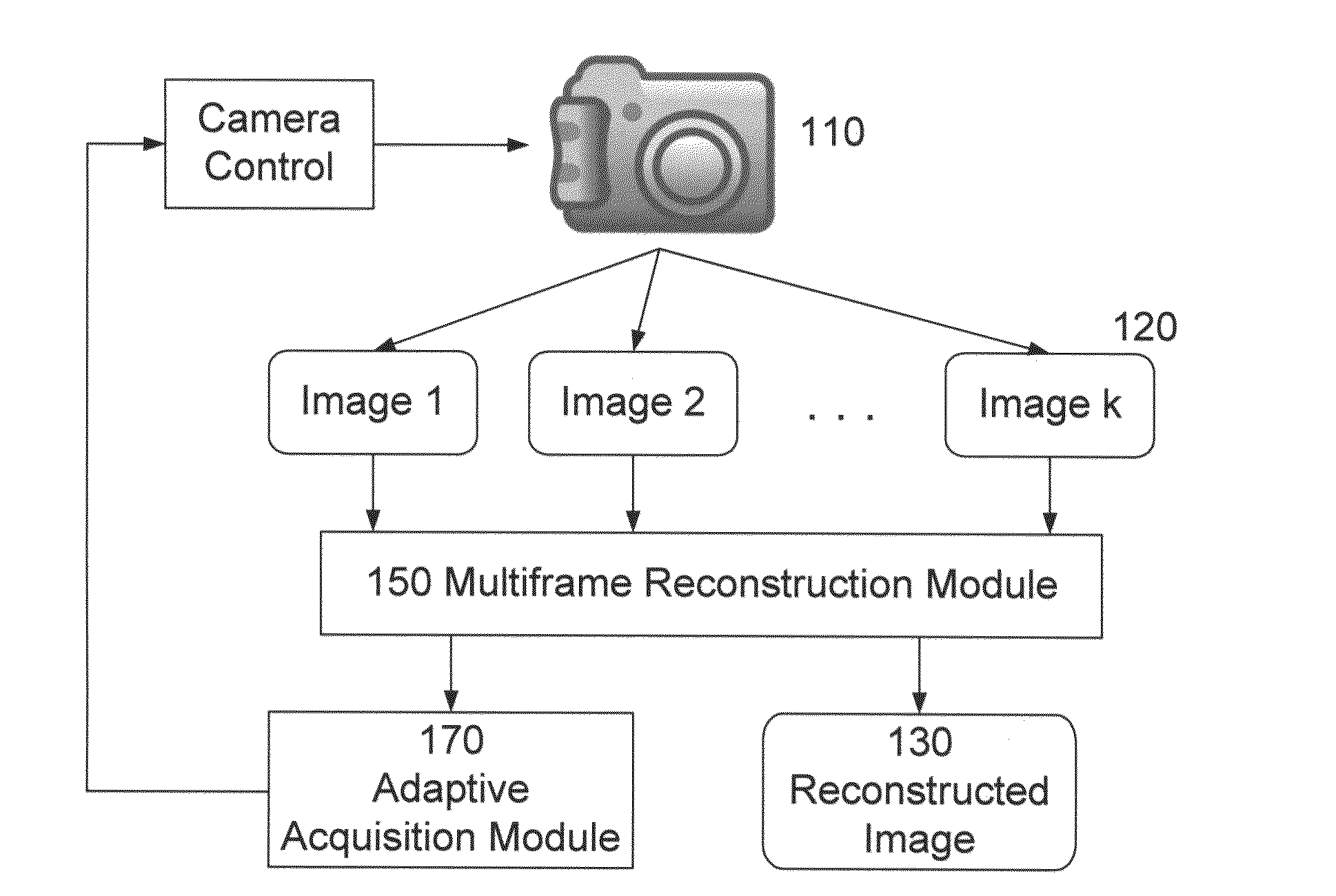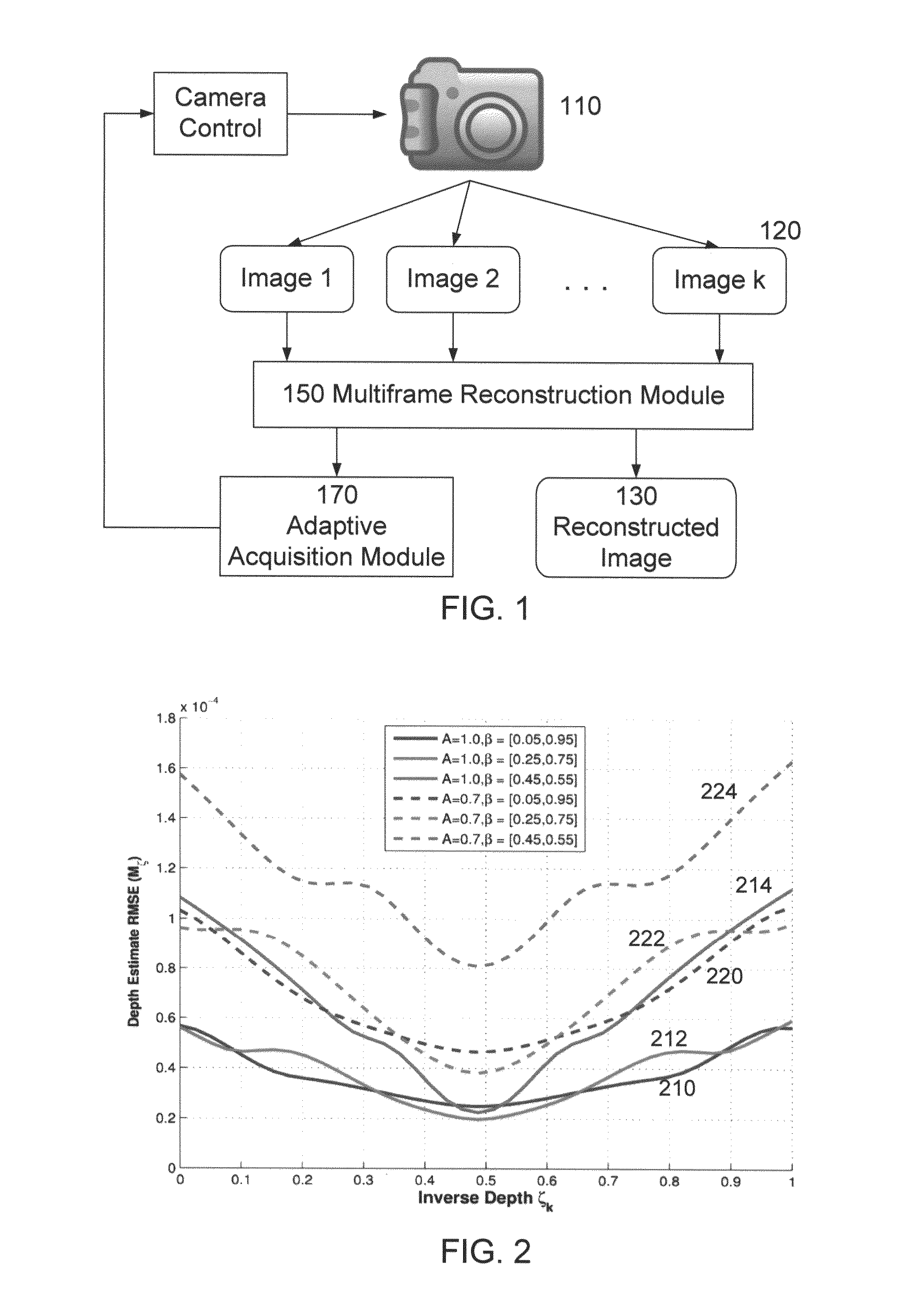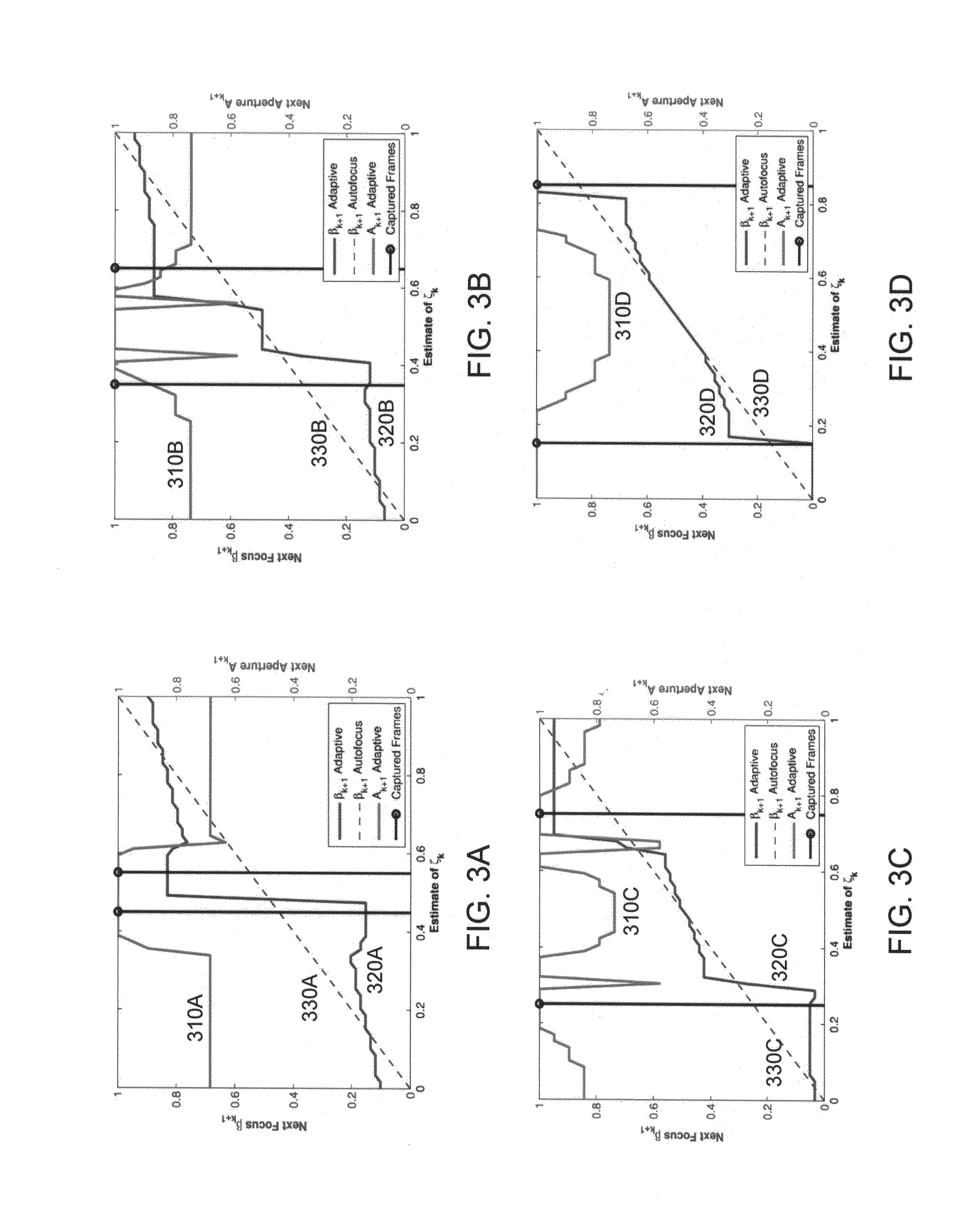Adaptive image acquisition for multiframe reconstruction
a multi-frame image and acquisition technology, applied in the field of multi-frame image reconstruction, can solve the problems of affecting the quality of the final reconstructed image, the adjustment process often consumes significant power to adjust the focus and aperture settings, and the difficulty in designing a camera capable of imaging a wide range of scenes with high quality, so as to increase the performance of multi-frame reconstruction, reduce the change in the acquisition setting, and increase the information captured
- Summary
- Abstract
- Description
- Claims
- Application Information
AI Technical Summary
Benefits of technology
Problems solved by technology
Method used
Image
Examples
Embodiment Construction
[0026]Outline
I. Overview
II. Multiframe Reconstruction
III. Adaptive Image Acquisition
[0027]III.A. MSE Estimate[0028]III.B. Determining Acquisition Setting based on RMSE[0029]III.C. Determining Acquisition Setting based on RMSE and Energy Constraints[0030]III.D. Objects with Depth
IV. Simulation Results
V. Further Embodiments
I. Overview
[0031]FIG. 1 is a diagram illustrating one example of adaptive image acquisition for multiframe reconstruction. A camera (or other image capture device) 110 acquires a set 120 of images: image1, image 2, etc. This set of images 120 is used to synthesize a reconstructed image 130, using conventional multiframe reconstruction techniques (in this example, implemented by module 150). In conventional multiframe reconstruction, the images 120 would be acquired using a predetermined set of acquisition settings. For example, the focus may be shifted to different predetermined positions to acquire a set of images 120 at different focuses.
[0032]However, this is not...
PUM
 Login to View More
Login to View More Abstract
Description
Claims
Application Information
 Login to View More
Login to View More - R&D
- Intellectual Property
- Life Sciences
- Materials
- Tech Scout
- Unparalleled Data Quality
- Higher Quality Content
- 60% Fewer Hallucinations
Browse by: Latest US Patents, China's latest patents, Technical Efficacy Thesaurus, Application Domain, Technology Topic, Popular Technical Reports.
© 2025 PatSnap. All rights reserved.Legal|Privacy policy|Modern Slavery Act Transparency Statement|Sitemap|About US| Contact US: help@patsnap.com



